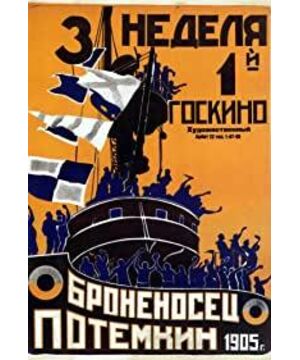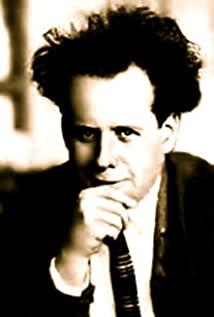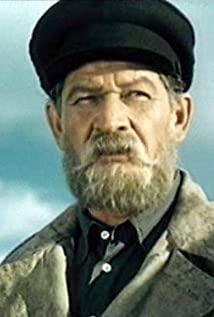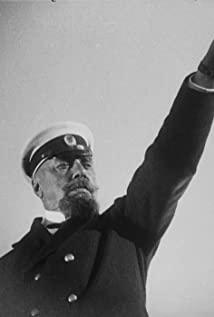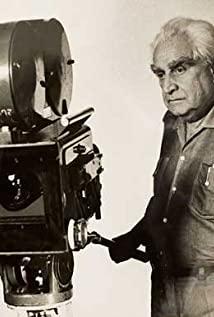"Battleship Potemkin", as a masterpiece of the Soviet montage school, its classic status and influence has been written by generations of film historians, the works of directors from various countries and the "Twelve World Films", "Sixteen Best Films of the World" and other such lists are counter-copied proofs. As a gift film for the 20th anniversary of the Russian Revolution in 1905, this film is not limited to graphical politics and tools for propaganda and enlightenment, like some of the main melody films in later generations. Although there are still two years before the great dumb movie begins to speak, the charm of the silent film "Battleship Potemkin" is enough to make modern people still watch it with breathlessness.
The film takes the Russian Revolution in 1905 as the background. It tells the story of the sailors on the battleship Potemkin rising up under the abuse of officers, occupying the warship, and the leader of the uprising, Vakurinchuk, who died in the struggle. The people of Odessa deeply mourned him and provided supplies to the soldiers of the Potemkin. When the soldiers and civilians were enjoying themselves, the Tsar’s army brutally slaughtered the people on the Odessa steps, and the Potemkin bombarded the enemy’s military. The stronghold counterattacked, and then sailed safely past the fleet that was unwilling to suppress the compatriots and sailed to the high seas. The film consists of five parts: "Man and Maggot", "Tragedy on the Back Deck", "Inspiration of the Dead", "Odessa Stairs", and "Encounter with the Fleet". The structure follows the Greek tragedy "Golden Section Law" In the format of ", each paragraph has a complete transition, and the rendering of emotions in the paragraph also tends to the extreme. While expressing the theme, it firmly grasps the audience. Each paragraph is like a movement of a complete symphony. For example, when a sailor who refused to eat meat with maggots was washing dishes for the officer, he saw the words “food” on it, and the scene of throwing the plate angrily was performed by shots from several different camera positions, which extended the time and fully represented the sailor. The angry mood, together with the performance of other sailors in this paragraph, laid the foreshadowing and psychological foundation for the uprising in the second paragraph. In addition, for example, the people’s passion and determination turned from grief to resistance in the "Inspiration of the Dead" paragraph, and the people’s panic from joy to despair in the "Odessa Stairs" paragraph, the ups and downs of emotions, together with the speed and slow editing of the camera, constitute the rhythm of the film. .
The film is also very good in the handling of contradictions and the performance of the characters. From the contradiction between sailors and officers at the beginning, to the contradiction between the people and the czarist dictatorship, the conflict has grown from small to large, from "for a spoonful of borscht" to being free. The theme of the film was further deepened by the struggle, "all for me, I am for all". In the passage, the strong contradictory tension is also fully revealed, especially in the section of "Odessa Stairs": soldiers strafing at the people in neat steps and fleeing people in horror, and the corpses lying vertically on the steps are visually visible. The cross-composition of the above, the contrast between the mother who is holding her child and walking towards the soldier against the crowd, the fleeing crowd, the row of soldiers... These externalized visual contradictions all show the relationship between the people and the czarist dictatorship, and the brutal violence. The profound contradiction. In the portrayal of the characters, the epic-style "Battleship Potemkin" outlines a portrait of a group of characters for us. For example, the brave Vakurinchuk, the cruel officer, the wretched military doctor, the hypocritical priest, one after another kind, courageous and oppressed people, cold-blooded czar soldiers, brave and amiable sailors... Under the narrative background, it is infused with the expression of full of allegorical details, fully and three-dimensionally showing the characters, rendering the atmosphere, and expressing the theme. For example, the head of the officer swayed with the basin containing the maggot soup, and the close-up of the smiling face was vivid. It reveals the perverted and cruel psychology of the officers. The combination of the priest’s cross and the officer’s sword symbolizes the collusion between the czarist autocracy and the church, exposing the hypocrisy and violent nature of the church. In the "Inspiration of the Dead", people are determined to resist. Shi's clenched hands concretely demonstrated their firm conviction and courage not to fear cruelty.
As a montage masterpiece and the highest achievement "Battleship Potemkin", the whole text is naturally like a montage textbook. Eisenstein used the film to practice and enrich his own montage theory. Aside from theory and meaning, he focuses solely on the film and connects with the thawing of the ice and the workers’ strike in Pudovkin’s "Mother". The shots are the same. The “Stone Lion Roar” shot in "Battleship Potemkin" is also an example cited by film theorists and historians of the past. The three stone lion shots of different shapes have been edited through rational and creative editing. The function of the product of two numbers shows the awakening and strength of the people. The clip-nose glasses lens of the military doctor who also uses metaphoric montage in the film also impressed the audience. The combination of scenery, weather, subtitles and the themes contained in them and symbolic relationships are also numerous in the film. In the scene of the massacre of the Odessa ladder and the encounter of the Potemkin fleet, the use of accelerated montage techniques has fully created a tense atmosphere, accelerated the narrative rhythm of the film, the variation of the emotions between the paragraphs and the interior, and a variety of montages The use of techniques deeply attracts every viewer. The function and charm of montage can be seen. It is no wonder that montage will have a profound impact on the development of the film.
As a comprehensive art and moving painting, not every movie has an appropriate and delicate composition, but every classic movie that can stand the scrutiny of the years will inevitably have a unique composition and aesthetic concept. As a universal language, the charm of good movies transcends national boundaries. Specific to this film, when the people gather to mourn Vakurinchuk and unite together, whether it is the people stretching on the long and narrow embankment, the continuous flow of people from the city gates and the front and back steps of the screen, overhead shots The panoramic view of the crowd surrounding the tent where the dead was placed or the panoramic view of the people above and below the city gate is full of depth, showing the power of the people who are constantly gathering in a macroscopic view. As the subtitles write, the people will not forget him (Waku Lin Chuke), for a better tomorrow, for their own country, the people are united. In the scene of the Odessa ladder massacre, we can clearly see a large panorama. The statues in the foreground show people the backs of the Tsarist soldiers slaughtering the people, and the church church in the depths of the field is fully explained. The environment is also full of irony and metaphorical meaning. In addition to the pictures, the soundtrack of the film is also commendable. As we all know, even in the silent film era in the early days of the film's birth, film soundtracks have already appeared. The 7th Oscar Awards also set up the Best Music Award. As a kind of film narrative language, good music allows emotions to last, accompany with the film, and spread throughout the world. Countless examples such as "Jade Spring Dawn", "Star Wars", "The Godfather", "Mrs. Belon", "White Night Escape", "Bodyguard", "Slumdog Millionaire" and so on all prove this time-honored law. As for this film, if the structure and montage rhythm of the whole film are just like a symphony with ups and downs, then the function of the real symphony in the film—Shostakovich’s "Symphony No. 5" cannot be tolerated. Underestimate. The movement of different themes and emotions matches the changes in plot and mood. Sad, melodious, strong, powerful, brisk and multi-emotional music, tuba, drums, violin...Classical music gives the film a different flavor. It is not only an embellishment and vassal, but also a variety of emotions in the film. The rendering and atmosphere have strengthened the narrative effect and expressive strength. In the massacre part of the Odessa ladder passage, the soundtrack and sound are well combined with the picture, creating a strong atmosphere of tension and horror. The soundtrack of the soldiers' footsteps was strengthened to express their strength and the horror of the atmosphere. And when the mother holding the dead child walks towards the soldier, the complicated soundtrack changes gradually fade out, and only two or three kinds of orchestration are left with an almost silent atmosphere, which draws all attention to the incident. This silence is even more intense. Horror
As a classic in the classics, the achievement and significance of the Odessa stepped passage of "Battleship Potemkin" has been confirmed countless times. In fact, the Odessa ladder is only 192 steps, while Eisenstein used more than 150 shots to realize it. The repeated switching between the butcher and the victim made the film longer, the space capacity increased, and the entire atrocity process was even greater. shocking. The whole paragraph is divided into two paragraphs with extreme contrast of emotions before and after. The conflict between the smiles of the people supporting the insurgents and the horrific massacre by Tsarist Russian soldiers has further highlighted the tsarist tyranny, the essence of annihilating human nature, and the justice and necessity of resistance. Looking specifically at the process of the massacre, in addition to the close-ups of the faces of multiple victims, the collection of subjective shots, the most impressive, and the more complete description of the victim’s fate is the mother who embraced the deceased child and persuaded people to explain clearly. The old woman and the stroller slid down. The close-up of trampling the child's body and the close-up of the mother's face, the quick switching between the mother holding the dead child and the Tsar soldier, strongly demonstrates the conflict between the people and autocracy and violence, and has a strong visual impact. The mother walked toward the soldiers without fear, hoping to get a chance for the child, the old woman persuaded people, naively hoping to make it clear, the predictable result still shakes the hearts of the audience. In the end, the performance of the baby carriage sliding scene accelerated the narrative rhythm and created a strong atmosphere and emotions. The repeated switching of the baby carriage and the scenes of the victimized people impacted the audience's vision and psychology. Later, the station shootout in "Iron Selflessness" The recurrence of similar scenes in the scene is a tribute to the film. At the end of the paragraph, as mentioned above, the metaphorical stone lion image rationally reveals the awakening of the people. When oppression and massacre have pushed the people to purgatory, the awakening of artistic expression is indeed deeply rooted and trending. . All in all, the multi-angle, multi-camera, and multi-scene rapid switching in the Odessa stepped passages, and the successful use of juggling montage techniques set an example for the use and research of montage for later generations, and at the same time it is full of humanitarian sentiment. The land artistically reproduces the true living conditions and sufferings of the people at that time.
As a black and white film, the interesting thing about "Battleship Potemkin" is the red flag flying in it. Obviously, compared to painting color on film, it was only ten years later that "Flashy World" marked the birth of color movies in the true sense. However, "Battleship Potemkin" still set up a banner for us, it brought us the innovation of film narrative and aesthetic concepts, and pointed out an important path for the development of film. In addition, I am willing to believe that it is not just montage that has allowed the red flag to stand for 85 years and will continue to fly for a long time. It is the use of montage techniques, innovation, and perfection of the sincerity of the director behind the film and the adoption of the film. It conveys the people's hatred of oppression, dictatorship, violence, resistance, and yearning for freedom, democracy, and happiness, the eternal theme of mankind.
View more about Battleship Potemkin reviews


